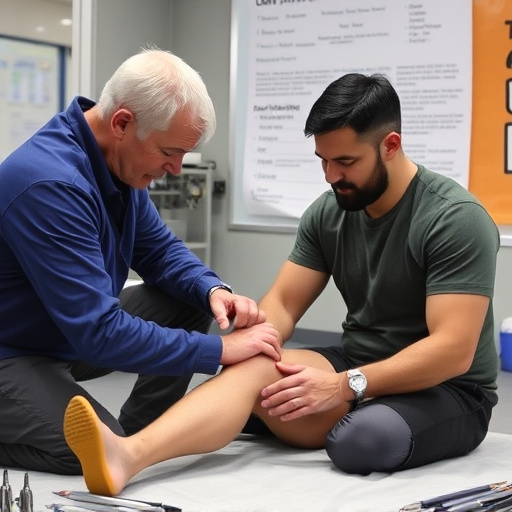Understanding federal injury claims rights is crucial for navigating processes and securing justice. For non-work accidents, SSDI or Medicare apply based on severity. Informed decisions about health & legal entitlements require knowledge of covered treatments & rehab services. Gathering medical records, reports, and witness statements promptly is vital. Consulting an experienced attorney ensures rights protection & statute of limitations compliance. Acting swiftly secures compensation for pain, expenses, and lost wages. Strategic rehabilitation, functional training, & detailed documentation strengthen claims.
“Navigating federal injury claims can be complex, but understanding your rights is crucial. This comprehensive guide arms you with the knowledge needed to protect your interests during this process. We’ll walk you through each step, from grasping the fundamentals of your rights in federal claims to ensuring fair compensation. By following our practical tips and strategies, you’ll gain confidence in navigating this labyrinthine legal landscape.”
- Understanding Your Rights in Federal Injury Claims
- Navigating the Legal Process: Steps to Protect Yourself
- Ensuring Fair Compensation: Tips for Successful Claims
Understanding Your Rights in Federal Injury Claims

When it comes to federal injury claims, understanding your rights is a crucial step toward ensuring justice and fair compensation. Each type of federal program has its own set of rules and procedures for handling injury cases, so it’s essential to familiarize yourself with these regulations. For instance, if you’ve suffered an injury in a non-work related accident, you might be eligible for benefits through Social Security Disability Insurance (SSDI) or Medicare, depending on the nature and severity of your injuries.
Knowing your rights also means being aware of the options available for non-invasive treatment and post-accident rehabilitation. Federal programs often cover therapeutic exercises and other rehabilitative services that can significantly aid in your recovery process. It’s important to stay informed about these benefits to make informed decisions regarding your health and legal entitlements during federal injury claims.
Navigating the Legal Process: Steps to Protect Yourself

Navigating the legal process for federal injury claims can be complex and daunting, but understanding your rights and taking proactive steps is crucial. When filing a claim for compensation following an accident or injury, especially in cases involving lower back pain from personal injury chiropractic treatments, it’s essential to act swiftly. The initial step is to gather all relevant information: medical records detailing the extent of your injuries, including any therapeutic exercises prescribed, along with evidence of treatment received; police reports if applicable; and witness statements can significantly strengthen your case.
Next, consider consulting an experienced attorney specializing in federal injury claims. They can guide you through the intricate procedures, ensuring your rights are protected. This includes understanding the statute of limitations for filing a claim, which varies based on jurisdiction and type of injury. For instance, in personal injury chiropractic cases, prompt action is vital to ensure compensation for pain and suffering, medical expenses, and potential lost wages due to injuries that may require ongoing care and therapeutic exercises.
Ensuring Fair Compensation: Tips for Successful Claims

When navigating federal injury claims, ensuring fair compensation is paramount. Here are some practical tips to help you secure a successful outcome. First, thoroughly document every aspect of your injury and the events leading up to it. This includes seeking immediate medical attention after a car accident or similar incident, gathering all necessary reports, and keeping detailed records of any expenses related to your injury, such as medical bills and lost wages. These documents will serve as compelling evidence during the claims process.
Additionally, consider prioritizing functional rehabilitation and exploring non-invasive treatment options. These approaches can not only aid in your recovery but also strengthen your claim by demonstrating proactive steps towards healing. Remember, presenting a well-organized case with comprehensive documentation significantly increases your chances of receiving adequate compensation for your federal injury claim.
Protecting your rights during federal injury claims is crucial. By understanding your legal standing, navigating the process with care, and ensuring fair compensation, you can achieve a positive outcome. Remember that knowledge is power; familiarizing yourself with each step outlined in this article will empower you to advocate effectively for your rights in federal injury claims.













